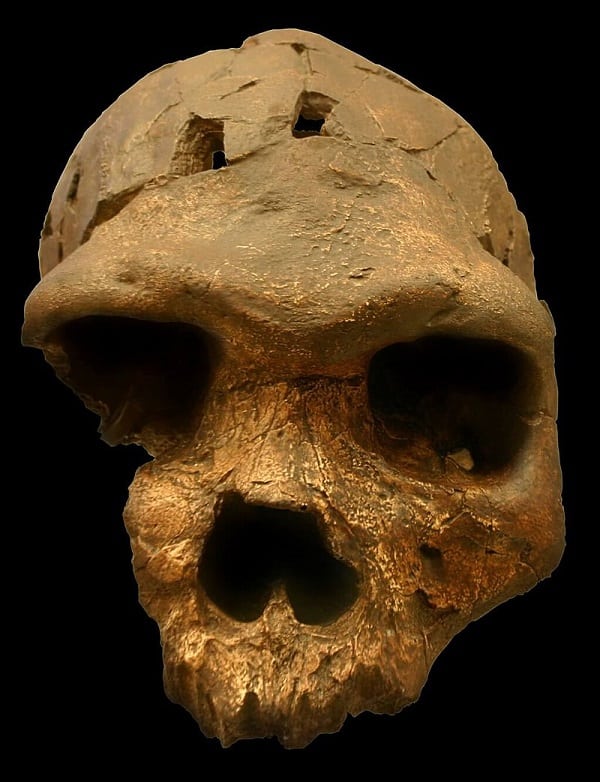Scientists have recently given a new name to one of our ancient direct human ancestors calling it Homo bodoensis.
This species of hominin lived during the Middle Pleistocene (now called Chibanian) between 774,000-129,000 years ago. The scientists reassessed existing fossils of Homo rhodesiensis and Homo heidelbergensis from Africa and Eurasia from this period.
During the Middle Pleistocene our species Homo sapiens arose in Africa, while the Neanderthals (Homo Neanderthalensis) arose in Europe. However, there were also other older species such as H. rhodesiensis and H. heidelbergensis, making the whole period poorly understood and often referred to as the “muddle in the middle.”
While fossils discovered during this time have often been assigned H. rhodesiensis and H. heidelbergensis, both are poorly defined and have contradictory definitions. DNA evidence analysed recently has shown that some H.heidelbergensis fossils in Europe were actually early Neanderthals, while African fossils have been defined as both heidelbergensis and rhodesiensis. Furthermore, analysis of Middle Pleistocene fossils from East Asia also suggest that they have difference facial and other features from those in Europe and Africa, and therefore they cannot be assigned to heidelbergensis. Basically, anything that is not clearly defined gets assigned to one of these two taxa. H. rhodesiensis is also controversial due to its association with English imperialist and colonist Cecil Rhodes.
This confusion has led some scientists to propose completely abandoning heidelbergensis and rhodesiensis as valid taxa. They instead proposed “a new taxon Homo bodoensis sp.nov, as an early Middle Pleistocene ancestor of the Homo sapiens lineage, with a pan-African distribution that extends into the eastern Mediterranean (Southeast Europe and the Levant)”.
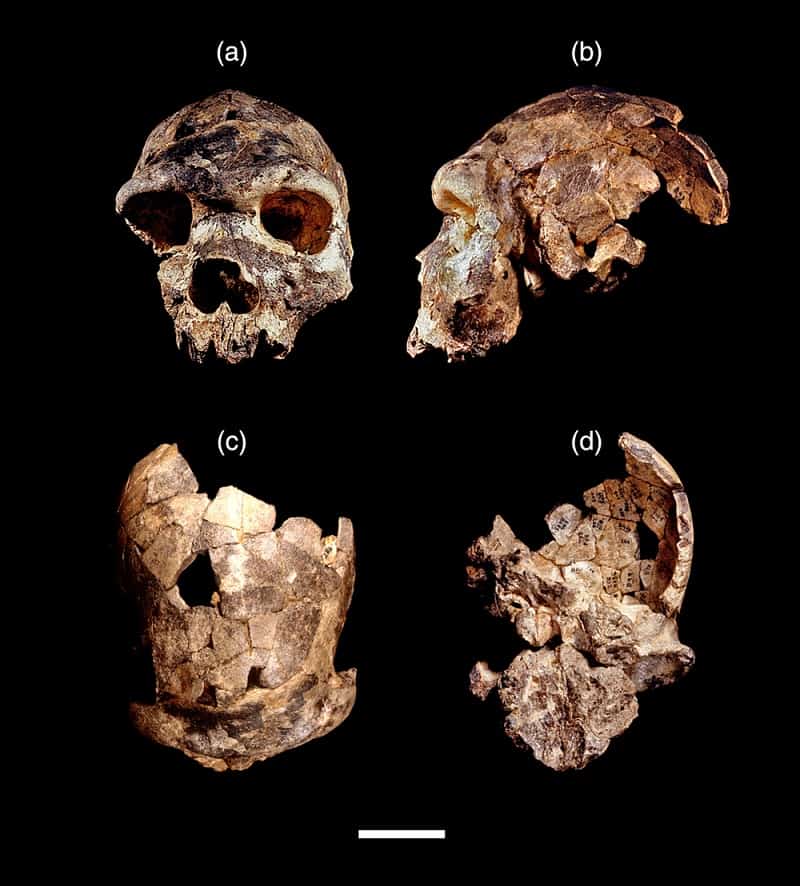
Homo bodoensis sp. nov. holotype partial cranium Bodo 1 (Middle Awash, Ethiopia). Frontal (a), left lateral (b), superior (c) inferior (d) views Scale bar 5 cm. Mirjana Roksandic 2021 et al
Secondly, they proposed that “many of the fossils from Western Europe (e.g. Sima de los Huesos) currently assigned to H. heidelbergensis s.s. be reassigned to Homo neanderthalensis to reflect the early appearance of Neanderthal derived traits in the Middle Pleistocene in the region”. Finally, they suggest “that the Middle Pleistocene Asian fossils, particularly from China, likely represent a different lineage altogether”, and these could get their own nomenclature after more research.
H. bodoensis, is named after a 600,000-year-old skull found in Bodo D’ar, Afar Depression, Ethiopia, in 1976. The team suggest that it be assigned to most Middle Pleistocene humans from Africa and also to some from eastern Europe, while many from western Europe should eventually be reclassified as early Neanderthals; all of which were previously described as H. heidelbergensis and H. rhodesiensis. Eventually, these two names should be completely replaced by H. bodoensis.
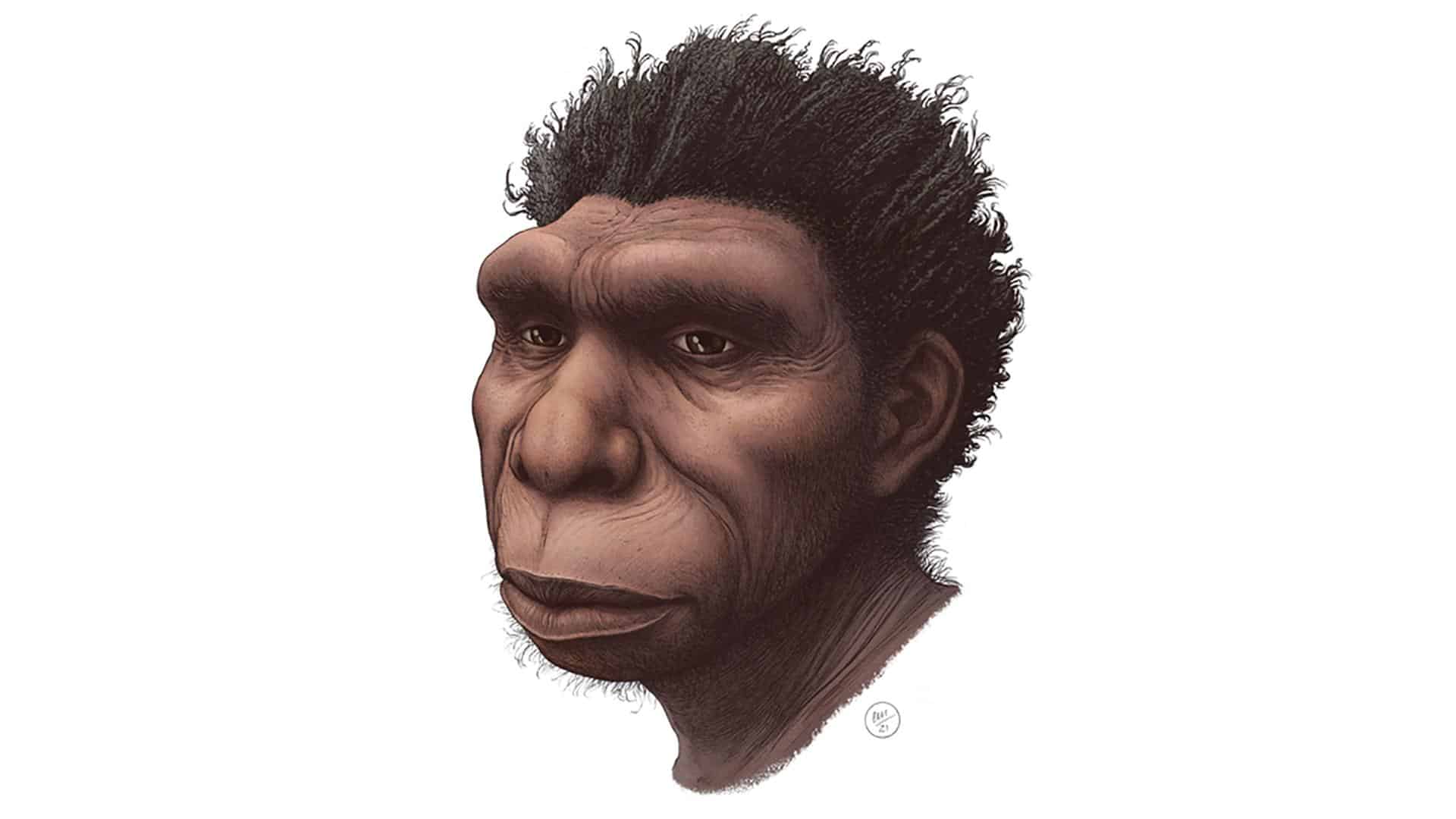
Artist’s Rendering of H. bodoensis. Credit Ettore Mazza University of Hawaii
The team has proposed that Homo bodoensis could be the direct ancestor of modern humans, considering that H. sapiens first arose in Africa. They believe that H. bodoensis separated from Eurasian hominin groups before the split of the Eurasian hominin forms into Neanderthals, Denisovans, and possibly other groups. Although H. bodoensis is an African species, it is likely that it played a role in the evolutionary history of the Levant and Europe because it was potentially present there too. According to the study, “Middle Pleistocene specimens from the two regions (mostly concentrated in the eastern Mediterranean), which do not demonstrate any Neanderthal traits, such as Mala Balanica (Serbia) and some specimens from the Levant such as Hazorea and Nadaouiyeh Aïn Askar could be considered as H. bodoensis”. However, these have not formally been included in the new classification because fossil evidence is patchy.
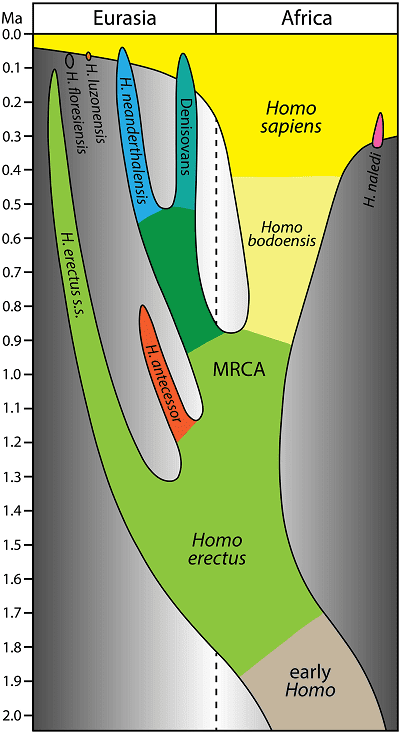
A simplified model for the evolution of the genus Homo over the last 2 million years, with Homo bodoensis sp. nov. positioned as the ancestral (mostly African) form of Homo sapiens. Mirjana Roksandic 2021 et al
As is always in science, not all paleoanthropologists agree with this. Chris Stringer from the Natural History Museum in London is critical of moving away from H. heidelbergensis, event though he agrees that it has been too widely used. He thinks this name should be limited to the Mauer jawbone (found in 1907 in Germany) and a few other European fossils
For the African fossils, Stringer wants to keep using H. rhodesiensis because in his opinion it is named after the country and not Cecil Rhodes (after whom the country was named). More importantly he thinks that because according to nomenclature rules established names have priority and H. rhodesiensis has already been formally named, so it should continue to be used unless the description for it is wrong. According to him, if H. rhodensiensis is still considered inappropriate, there are other names that can used, such as Homo saldanensis after the Saldanha cranium found in the 1950s and which the current team has assigned to H. bodoensis. He also does not agree that the Bodo specimen is our direct human ancestor because according to his team’s analysis conducted in 2019, it seemed to have followed a different evolutionary path to H. sapiens.
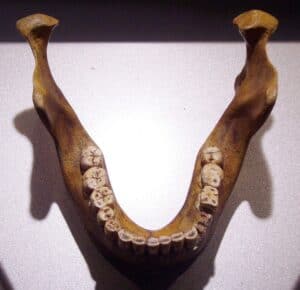
Mauer 1. Mandible (lower jaw) of the type specimen of Homo heidelbergenis from Mauer near Heidelberg, Germany (replika, Museum Mauer). CC BY
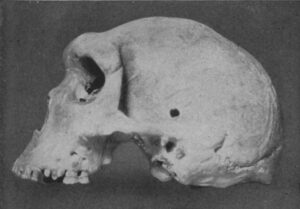
Side view of Kabwe 1, the type specimen of Homo rhodesiensis (original, approx. 300,000 years old). CC BY
Whatever the end result, it is always fascinating to find out more information about our ancient ancestors.
The study has been published in the journal Evolutionary Anthropology: Issues News, and Reviews.
TLDR? Watch this one minute video.
